
4 minute read
Zutari – Kashimbila Multipurpose Dam and Hydropower Station, Nigeria
Zutari for Kashimbila Multipurpose Dam and Hydropower Station, Nigeria
The preliminary design of the Kashimbila Multipurpose Dam on the Katsina-Ala River in Nigeria’s Taraba state was initially focused solely on the dam’s functioning as a buffer, in case the natural embankment of Lake Nyos in Cameroon failed. As the design process progressed through a more multipurpose approach, the capacity of the dam was increased to provide irrigation and potable water to the surrounding towns and villages, as well as for the generation of hydropower.
Advertisement
Some key project components designed by Zutari were: • a 36 m high composite dam • a 40 MW hydropower station • a network integration that includes some 210 km of double-circuit 132 kV transmission line and six new substations. The project had a huge positive impact for Nigeria and is one of its showcase presidential projects. Benefits to the local community include job creation, potable water supply, electrification, and an improved transmission network to this region of the country.
From the early stage of the project back in 2009, Zutari was responsible for the entire design for all engineering disciplines – such as civil, structural, hydrological, geotechnical, electrical and mechanical – for the detailed design of the dam, outlet works, the hydropower station, the transmission towers, line route/profile and substations, as well as the irrigation component.
The company also provided the necessary advice and project management services to the contractor for the appointment of several specialist suppliers.
Zutari’s innovative and out-of-the-box thinking led to several changes in the initial concept of the project, which resulted in a better project better serving the people of Nigeria, as well as the surrounding community.
Zutari used state-of-the-art technology to improve the quality of design, to present it to the client and, more importantly, to integrate the various elements of the project
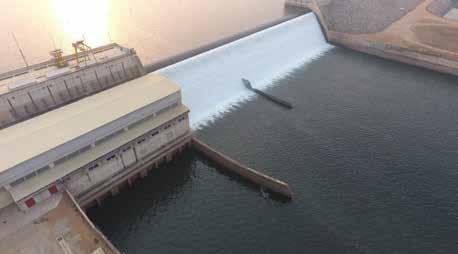
and ensure a zero-clash approach, which facilitated the construction.
Several challenges were experienced throughout the design and construction period but were all overcome using a teamwork approach, which resulted in the first filling of the dam in 2017, followed by the successful commissioning of the power station, transmission line and substations in February 2020.
Nigerians can now enjoy additional power on their very strained grid, potable water and power supply to the surrounding community, and can look forward to the construction of the irrigation schemes, which is soon scheduled to commence.
PROJECT TEAM Client: Nigerian Federal Ministries of Water Resources and Power (via SCC Nigeria)
Consulting engineer:
Zutari (previously Aurecon) Main contractor: SCC Nigeria
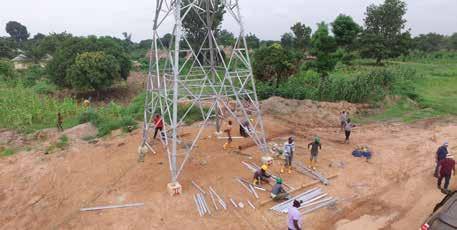
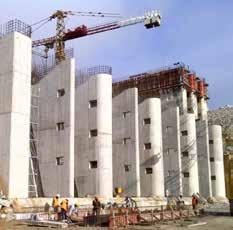
WINNER COMMENDATION
Orange Botswana appointed the professional team of AOS-GBK to build a new data centre and offices on Plot 74911 at the Botswana Innovation Hub Technology Park. The data centre will be used to host existing and future telecom and IT equipment.
The request for proposal (RFP) initially required an office space for 30 employees and a 600 m² ‘white space’ with auxiliary service and functions. Bidders were to provide two proposals: • single storey with provision for an additional floor in the future • double storey. Subsequently, the proposal transformed into a single-storey building with office space for 25 employees and a 200 m² ‘white space’ with auxiliary service and functions.
AOS Consulting Engineers for New Orange Data Centre and Office, Botswana
Initially, only 119.98 m² of the ‘white space’ with a Meet-Me room of 42.14 m² would be fitted out with the following: • access flooring • suspended ceiling • mechanical and electrical services to ensure a functional data centre for the telecom and IT equipment. Various passive design options were investigated and implemented to ensure that there is no abnormal heat transfer and also to provide a reduction in the heat load required for cooling the data centre space.
The HVAC system complied with the following principles: • an ASHRAE Class A1 environment for the
IT equipment and services • energy efficiency • lowest possible capital and operational costs • reliable and trouble-free installation. The units selected for this project are all aircooled units and not dependent on a water supply. Additionally, the Mitsubishi PFD units employ inverter-driven compressors and not digital scroll compressors as per the norm. Minimal (if any) humidification is required, which saves additional water.
The system uses high-efficiency inverter compressors and DC fan motors. In addition to this, the system is equipped with a heat interchange circuit, which provides additional subcooling, improving the capacity of refrigerant delivered to the expansion device.
It is notable that the outdoor unit has a guaranteed ambient operating range of between -20°C and +52°C. The system is also equipped with an electrical noise filter circuit protecting the electronic circuits of the system. This means that no additional third-party protecting devices are required. The electrical noise filter circuit protects against over- and under-voltage conditions, and is equipped with an auto phase correction facility. The system is also programmed for a quick auto power recovery.
The project achieved Tier III Certification from the Uptime Institute in March 2020.
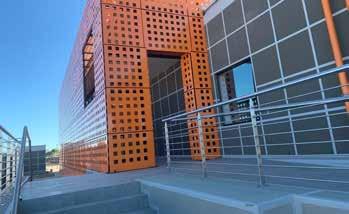
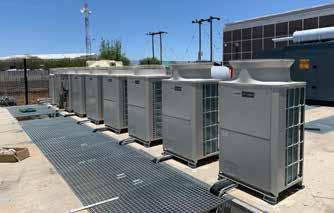
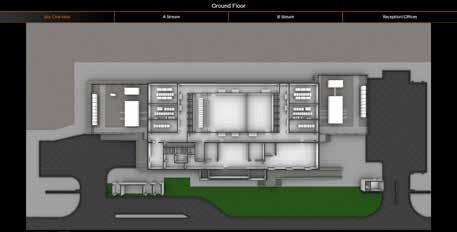
PROJECT TEAM Client: Orange Botswana Lead consultant: AOS-GBK Mechanical and fire: AOS Engineers Architect: GBK Architects Electrical engineer: Onezero Consulting Contractor: Concor










